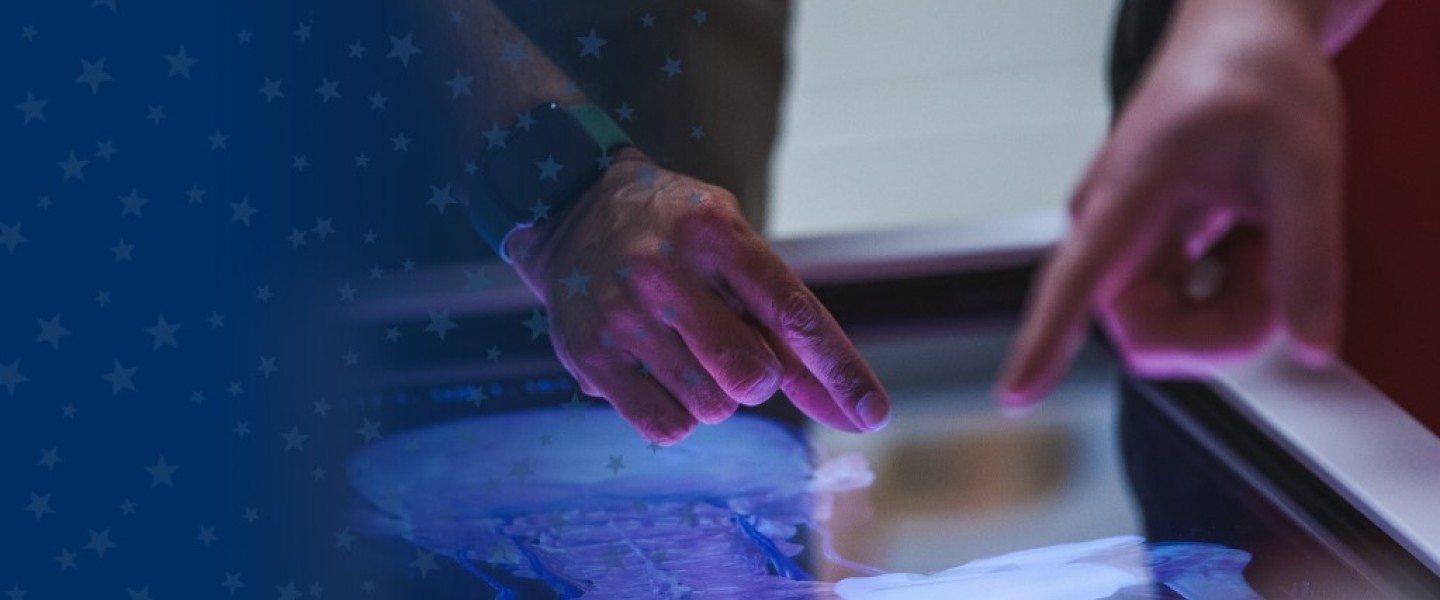Physical therapy is a form of healthcare that has traditionally relied on hands-on treatments to provide patients with improved movement, mobility and function. An individual may require physical therapy after surgery or while recovering from an injury to help them regain full function in an area of their body. In some cases, physical therapy is required after a health incident, such as a stroke or heart attack.
While this practice is still rooted in personalized care from a physical therapist, the future of physical therapy will be defined by advancements in technology.
Why Is Technology Important in Physical Therapy?
Technology has helped redefine the physical therapy healthcare sector, largely because it gives practitioners an ability to provide every patient with precise, customized care. New and improved physical therapy technology allows physical therapists to:
- Improve the accuracy of their treatment plans.
- Harvest data that can be used to customize treatment.
- Remotely monitor patient progress.
- Improve the accessibility of physical therapy treatment.
Technology is expected to continue to revolutionize the physical therapy industry, ultimately helping practitioners work toward improved health outcomes for their patients.
These are just a few of the ways technology is changing physical therapy practices and treatments:
1. The Role of Wearable Devices in PT
Wearable devices have quickly become some of the most prominent pieces of technology in any physical therapy practice. Wearable technology allows physical therapists to implement their care plans remotely and collect data about their patients in real-world settings.
These are the wearable devices that are dominating the physical therapy landscape right now:
Skin Sleeves
Skins sleeves are simple, wearable devices that can be used by patients of all ages and abilities. Physical therapists use skin sleeves to ensure that their patients adhere to their treatment plan and to collect critical biometric data. These devices are expected to continue to play an important role in the sports performance sector, as they allow physical therapists to track performance levels and hone care plans to improve performance results.
Smartwatches and Fitness Trackers
Smartwatches and fitness trackers are some of the most ubiquitous physical therapy devices of our era. The average person, whether they are enrolled in a physical therapy care plan or not, relies on these wearable devices to track their heart rate, log their meals, and count their steps each day. Within the physical therapy sector, fitness trackers and smartwatches can play a crucial role in monitoring patient progress and fine-tuning their treatment plan. Physical therapists are often able to sync the sensors in the fitness trackers and smartwatches to their own devices and programs, allowing them to monitor range of motion and make adaptations when needed.
Sensor Technology
Perhaps the most significant development in physical therapy technology in recent years has been sensors. Small and discrete, these sensors can easily be placed in a variety of high-impact areas, allowing physical therapists to harvest biometric data and create improved health results.
Physical therapists use sensor technology in a variety of creative ways, such as placing a sensor in a patient's sock to evaluate foot contact or embedding a sensor in clothing to collect data that can be used to help prevent future injury.
Fall Detection Devices
For elderly patients, slip-and-fall accidents can be incredibly dangerous. Fall detection devices alert designated individuals when a patient falls, which can improve response time for the patient and prevent serious injury. Thanks to recent technological advances, there are devices available that can help prevent future falls by analyzing patient data and alerting patients of imminent health emergencies that may result in a fall.
2. Gamification in Physical Therapy
In a surprising turn of events, physical therapy has become more fun thanks to the advent of motion-sensor gaming technology. The practice of using video games in physical therapy is known as gamification, and it's been heralded as one of the best ways to make physical therapy treatment both enjoyable and exciting for the patient.
Patients have used the Nintendo Wii's motion-sensor controls to play sports games, such as bowling. These games can be ideal for physical therapy because they require patients to make similar repeat movements, which can help with building muscle strength and improving motion control.
Gamification has offered many benefits, such as:
- Increasing a patient's enjoyment of physical therapy, which improves their motivation to keep going.
- Providing a sense of competition and camaraderie, which also boosts motivation levels.
- Allowing patients to continue with their exercises in the home environment in a way that is both fun and productive.
3. Sensory Rehabilitation Technology
Patients suffering from neurologic disorders or injuries may be suffering from sensory loss, which can significantly impact their mobility as well as their quality of life. Fortunately, physical therapists have found that sensory rehabilitation technology, when coupled with traditional physical therapy techniques and practices, can help improve their outcomes.
Sensory rehabilitation technology consists of both wearable and implantable devices that can be strategically placed to improve sensory impairment.
These devices are commonly used by physical therapists to:
- Assess disease or injury progress.
- Monitor results of current treatment plan.
- Evaluate current sensory impulse data.
4. IoT and Smart Equipment
The future of physical therapy will be heavily influence by the Internet of Things (IoT) and smart equipment. IoT in physical therapy allows therapists to use a variety of devices, including wearables and sensor technology, to sync patient data and create a customized care plan.
According to MIT, IoT and smart equipment can be used in order to create remote physical therapy plans that allow patients to undergo unsupervised physical therapy. This type of technology is changing the industry by:
- Allowing physical therapists to collect biometric data that can be analyzed and used to improve patient care plans.
- Giving physical therapists more freedom to practice with a higher volume of patients, as it allows for unsupervised sessions in remote locations.
- Improving patient results thanks to the highly-specific information that is collected, analyzed and compared against other devices.
5. TeleRehabilitation
Telehealth is the practice of providing virtual health care visits to patients who are not able to come into a physical office. It was something that was being dabbled with in the early days of the 21st century but became the norm for many people during the COVID-19 pandemic.
Despite the fact that the pandemic has subsided, telehealth continues to play a critical role in healthcare today — and the physical therapy sector is no exception. Telerehabilitation is improving accessibility, boosting patient success rates, and ensuring that patients stick with their physical therapy care plan for longer.
The CDC has discovered through data collection that roughly 70 percent of patients who undergo a knee replacement do not follow through with the physical therapy required to fully recover from this surgery. Telerehabilitation can improve those rates significantly, as it reduces the frustration and inconvenience of scheduling physical therapy appointments and makes many patients more comfortable with the idea of completing physical therapy exercises. When a patient is in their own home environment, they will feel less self-conscious and more willing to participate in the activities that will help them grow stronger with each passing day.
6. Virtual and Augmented Reality Treatment
Perhaps the most significant advances in physical therapy technology have come in the form of virtual reality (VR) and augmented reality (AR) treatment. The use of VR in physical therapy and across the healthcare sector is expected to grow by more than 25 percent by 2028, as physical therapists learn to become more dependent on immersive, computer-generated environments that can improve patient treatment and boost patient motivation levels.
For example, a patient who is enjoying VR physical therapy may have the ability to put on a VR headset and complete their exercises while surrounded by peaceful natural scenes. Perhaps they could be embattled in a competitive gaming environment in which they have to use specific motions that are part of their physical treatment care plan. Many physical therapists are finding that by blending VR technology with gaming advances, they can make their treatments more appealing and ultimately improve their patient adherence rates.
7. Robotic Physical Therapy Treatments
Robotic physical therapy treatments are also anticipated to increase in volume in the coming years, with the robotic technology market in this sector expected to grow 46 percent by 2026. Robotic technology has become especially vital when caring for patients who have issues with their lower extremities and can help with joint mobilization and gait improvement.
Some benefits of using robotic technology in physical therapy include:
- Reducing the time and cost of advanced physical therapy care for patients with significant mobility issues.
- Increasing the therapeutic prescription to allow for more movements and repetitions, something that can be time-consuming for physical therapists when performed manually.
- Allowing the physical therapist to collect real-time data and sensory feedback, giving them an opportunity to customize the patient's treatment plan and help them reach their goals as soon as possible.
Discover the Dynamic World of Physical Therapy
Learn more about how to help people heal from injuries and surgeries by becoming a physical therapist. Request more information about our Doctor of Physical Therapy program today.

